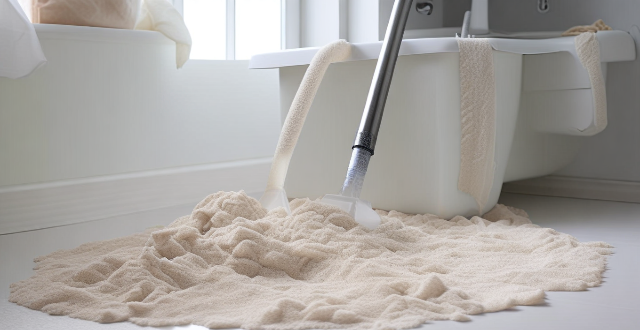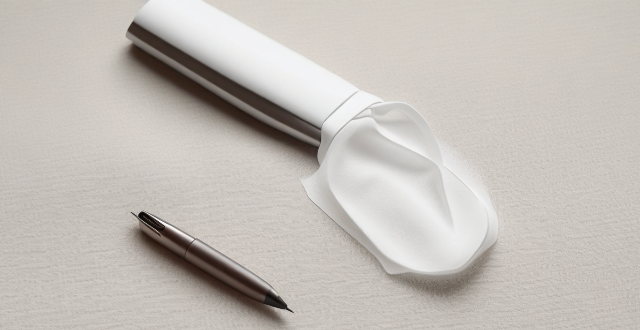Stain Professional

Can vinegar be used as a natural stain remover for clothes ?
Vinegar can be used as a natural stain remover for clothes due to its acidic properties and antimicrobial benefits. It is effective in removing various types of stains, including grass, blood, wine, coffee, tea, and sweat. To use vinegar as a stain remover, apply it directly to the stain, let it sit for 5-10 minutes, scrub gently, rinse with cold water, and wash according to care label instructions. Vinegar is cost-effective, environmentally friendly, and versatile. However, it should be tested on an inconspicuous area before use and avoided on delicate fabrics.

What are the best ways to remove stains from clothes ?
Removing stains from clothes requires pre-treatment, stain removers, home remedies, laundry detergent, and sometimes professional dry cleaning. Pre-treating the stain by blotting it with a clean cloth or paper towel is crucial. Commercial stain removers can be effective for various stains, while home remedies like baking soda and vinegar, hydrogen peroxide, and lemon juice can tackle stubborn stains. Applying laundry detergent directly to the stain and washing it afterward can also work. For delicate fabrics or persistent stains, professional dry cleaning may be necessary. By following these steps, most types of stains can be effectively removed from clothing.

How do I remove stubborn stains from carpets and upholstery ?
Removing stubborn stains from carpets and upholstery requires identifying the type of stain, acting quickly, pre-treating, gently blotting or scrubbing, rinsing and drying thoroughly, and possibly seeking professional help. Testing cleaning solutions on an inconspicuous area before use is recommended to avoid damage or discoloration.

How do I remove ink or pen marks from my clothing ?
Removing ink or pen marks from clothing can be challenging, but with the right techniques, it's often possible. Identify the type of ink, act quickly to blot wet ink, pre-treat the stain using appropriate methods for water-based, oil-based, or permanent marker ink, machine wash following care label instructions, check the stain before drying, and dry according to care label instructions. Always test cleaning solutions on an inconspicuous area first and consider professional cleaners for delicate or valuable garments. Patience and persistence are key when dealing with stubborn stains.

Are there any DIY tricks for getting out tough stains like blood or grass ?
When it comes to removing tough stains like blood or grass, there are several DIY tricks you can try before resorting to professional cleaning services. These include soaking the stained area in cold water, applying hydrogen peroxide directly to the stain, creating a paste with salt and cold water, applying white vinegar directly to the stain, mixing lemon juice with salt to create a paste, and mixing dish soap with baking soda to create a paste. It is important to always test any solution on an inconspicuous area of the fabric first to ensure it doesn't cause damage or discoloration. If these DIY methods fail, consider seeking professional help from a cleaning service.

Is there a natural way to clean stains off my clothes ?
Removing stains from clothes can be challenging, but natural methods like using white vinegar, baking soda, lemon juice, hydrogen peroxide, and salt can effectively clean various types of stains. These techniques are gentle on the environment and clothing.

What is the most effective method for removing wine stains from fabric ?
The most effective method for removing wine stains from fabric involves acting quickly, blotting the stain, applying salt and a stain remover, rinsing with cold water, washing the fabric, and checking the stain before drying.

How can I get rid of grease stains on my favorite shirt ?
Removing grease stains from your favorite shirt can be a daunting task, but with the right techniques and products, it is possible to get rid of these unsightly blemishes. Here are some steps you can follow to remove grease stains from your favorite shirt: 1. Act Quickly: The first step in removing grease stains is to act quickly. The longer the stain sits on your shirt, the harder it will be to remove. As soon as you notice the stain, take action to remove it. 2. Blot the Stain: Use a clean cloth or paper towel to blot the stain gently. Do not rub the stain aggressively, as this can spread the grease further into the fabric. Instead, apply gentle pressure to absorb as much of the grease as possible. 3. Apply a Stain Remover: Apply a stain remover specifically designed for grease stains. You can use a commercial stain remover or make your own by mixing equal parts of dish soap and white vinegar. Apply the solution directly to the stain and let it sit for 5-10 minutes. 4. Wash the Shirt: After allowing the stain remover to sit on the stain, wash the shirt in cold water using a laundry detergent that contains enzymes. Enzymes are effective at breaking down grease and oil, making it easier to remove the stain. Avoid using hot water, as this can set the stain permanently. 5. Check the Stain: Before drying the shirt, check to see if the stain has been removed. If the stain is still visible, repeat steps 3 and 4 until the stain is completely gone. Do not dry the shirt until the stain is completely removed, as heat can set the stain permanently. 6. Dry the Shirt: Once the stain is removed, dry the shirt according to the care label instructions. If you are unsure about the care instructions, it is best to air dry the shirt or use a low heat setting on your dryer. In conclusion, removing grease stains from your favorite shirt requires quick action, the right products, and patience. By following these steps, you can effectively remove grease stains and keep your favorite shirt looking its best.

What's the best way to treat set-in stains on white clothing ?
Set-in stains on white clothing can be stubborn and difficult to remove, but with the right approach, they can often be successfully treated. Here are some steps to follow: 1. Identify the Stain: First, identify the type of stain you are dealing with. Different stains require different treatments. For example, protein stains like blood or grass require a different approach than tannin stains like tea or coffee. 2. Act Quickly: The sooner you treat a stain, the easier it is to remove. If the stain is still wet, blot it with a clean cloth or paper towel to remove as much of the substance as possible. 3. Pre-Treat the Stain: Before washing, pre-treat the stain with a suitable stain remover. Choose a product that is safe for use on white clothing and apply it directly to the stain following the instructions on the label. Let it sit for the recommended time. 4. Wash in Hot Water: Wash the garment in hot water, using a detergent that is designed for white clothing. Check the care label on your garment to ensure that it can be washed in hot water. If not, use the warmest water recommended. 5. Use Chlorine Bleach if Necessary: If the stain persists after washing, you can use chlorine bleach. However, be sure to check the care label on your garment first. Some fabrics may not be able to handle bleach. If your garment is made of a material that can be safely bleached, add chlorine bleach to the wash cycle according to the package instructions. 6. Rinse Thoroughly: Rinse the garment thoroughly to remove all traces of the stain and any cleaning products used. 7. Dry and Check: Dry the garment and check to see if the stain has been removed. If not, repeat the process before drying again. Once the stain is gone, you can dry the garment as usual. In conclusion, treating set-in stains on white clothing requires patience and persistence. By identifying the stain, acting quickly, pre-treating, washing in hot water, using chlorine bleach if necessary, rinsing thoroughly, drying, and checking, you can often successfully remove even the most stubborn stains.

Is it possible to remove rust stains from fabric without damaging it ?
Rust stains can be removed from fabric using natural ingredients such as lemon juice and salt, vinegar and baking soda, or hydrogen peroxide. These methods are effective in breaking down the rust and lifting it away from the fabric without causing damage. It is important to test any cleaning solution on a small area of the fabric before applying it to the stain and to allow enough time for each method to work. If one method does not work, try another one until the stain is completely removed. After removing the rust stain, wash the fabric according to its care instructions to remove any residual cleaning solution and prevent further damage.

How do I achieve a professional-looking makeup job in a hurry ?
Achieving a professional-looking makeup job in a hurry is possible with the right techniques and products. Prepare your skin by cleansing, moisturizing, and priming. Choose the right foundation formula and apply it with a makeup sponge or dense brush for even coverage. Contour and highlight to define facial structure and add a glowing effect. Add color with blush, bronzer, eyeshadow, and eyeliner, and choose a long-lasting lipstick or stain. Set your makeup with setting powder and spray, and carry key items for quick touch-ups. Practice makes perfect, so streamline your routine and find what works best for you when you're in a hurry.

Can I install fiber optic broadband myself or do I need a professional ?
Fiber optic broadband installation is complex, requiring specialized tools and skills. While self-installation can save money and offer flexibility, it carries risks of damage and safety concerns. Professional installation ensures quality, time-saving, and support but can be costly. It's generally recommended to hire a professional for a smooth and reliable installation process.

How can women network effectively to expand their professional opportunities ?
Effective networking strategies for women include identifying goals, leveraging social media platforms, attending industry events, seeking mentorship, volunteering or joining professional associations, practicing active listening, and following up and staying connected. These steps help expand professional opportunities and foster meaningful connections.

Can women play professional football ?
**Can Women Play Professional Football?** The topic discusses the possibility and reality of women playing professional football. It starts with a historical perspective, highlighting the early days when women were not allowed to participate in football due to societal norms and gender roles. However, the first recorded women's football match took place in 1895, despite opposition from male-dominated football associations. The development of women's football is also discussed, with the establishment of the Women's World Cup in 1991 marking a significant milestone for the sport. Professional leagues such as the National Women's Soccer League (NWSL) in the United States have provided opportunities for female players to earn a living through football. The skill and talent of female footballers are emphasized, stating that they possess the same level of skill and talent as their male counterparts. Many women have showcased their abilities on the world stage, earning recognition and respect from fans and peers alike. However, the topic also highlights the challenges faced by women in football, such as unequal pay and limited resources compared to men's teams. There is a need for continued advocacy and awareness to ensure that women's football receives the same level of attention and investment as men's football. In conclusion, women can indeed play professional football. They have demonstrated their skills and talents on various platforms, including international competitions like the Women's World Cup. While there is still room for improvement in terms of equality and resources, it is clear that female footballers are capable of competing at the highest level of the sport.

What steps can women take to build a strong professional network ?
Building a strong professional network is crucial for career growth and advancement. For women, it can be especially important as they often face unique challenges in the workplace. Here are some steps that women can take to build a robust professional network: 1. Attend industry events and conferences. 2. Join professional organizations and associations. 3. Utilize social media and online platforms. 4. Find a mentor or sponsor. 5. Participate in training programs and workshops. 6. Volunteer for committees or boards. 7. Stay in touch with colleagues and alumni.

In what ways does academic integrity relate to professional ethics ?
**Academic Integrity and Professional Ethics: An Interconnected Relationship** The concepts of academic integrity and professional ethics are fundamentally interconnected, sharing principles like honesty, fairness, responsibility, respect, and courage. Academic integrity lays the groundwork for professional ethics by instilling foundational skills such as critical thinking, research integrity, and ethical decision-making. These skills transition from academia to profession, building reputations for reliability and trustworthiness. Therefore, promoting academic integrity is crucial not only for the academic community but also for the broader professional world.

How do I become a professional athlete in basketball ?
To become a professional basketball player, start early, practice regularly, join a team or club, focus on academics and attend a good high school with a strong basketball program. Get recruited by a college program, excel in college, gain national exposure, hire an agent, and go through the draft process. Stay focused, maintain a positive attitude, and be willing to put in the work to achieve success.

How does stress management through exercise impact professional well-being ?
The impact of stress management through exercise on professional well-being is significant and positive. Professional well-being refers to overall satisfaction and happiness in the workplace, which includes job satisfaction, work-life balance, relationships with colleagues, and personal growth opportunities. Exercise is a proven method for managing stress, as it releases endorphins and reduces levels of stress hormones like cortisol and adrenaline. Regular physical activity also promotes better sleep, essential for stress management. The impact of exercise on professional well-being includes improved mental health, enhanced cognitive function, increased energy levels, better work-life balance, and improved interpersonal relationships at work. By incorporating regular physical activity into our daily routine, we can achieve these benefits, leading to increased productivity, reduced absenteeism, and improved job performance. Therefore, organizations should promote exercise among their employees as part of their overall wellness program.

How can women balance their personal and professional relationships effectively ?
Balancing personal and professional relationships is a challenge that many women face in their lives. It requires careful planning, effective communication, and a strong support system. Here are some tips on how women can balance their personal and professional relationships effectively: 1\. Prioritize Your Time: Plan your day in advance, allocating time for work, family, friends, and self-care activities. This will help you stay organized and focused throughout the day. Learn to say "no" to unnecessary commitments and distractions that may interfere with your personal and professional life. 2\. Communicate Effectively: Discuss your needs and expectations with your partner, family members, and colleagues. This will help them understand your priorities and support you in achieving a healthy work-life balance. Don't hesitate to ask for help when needed. Whether it's delegating tasks at work or asking a friend to watch your child, having a support system in place can make all the difference. 3\. Practice Self-Care: Make time for activities that help you relax and recharge, such as exercise, meditation, or hobbies. Taking care of yourself will not only improve your physical and mental health but also enhance your relationships with others. Maintain healthy habits by eating well, getting enough sleep, and staying active to maintain your energy levels and overall well-being. 4\. Build Strong Professional Relationships: Attend industry events and conferences to expand your professional network and build relationships with colleagues and mentors who can offer guidance and support. Seek out mentors who can provide valuable insights into balancing personal and professional relationships, as well as offer guidance on career development. 5\. Embrace Technology: Take advantage of technology tools like calendar apps, task managers, and video conferencing software to streamline your workflow and stay connected with loved ones even when you're away from home. While technology can be helpful, it's important to set boundaries and avoid letting it consume too much of your time and attention. 6\. Remember Your Goals and Values: Always remember your goals and values when making decisions about how to spend your time and energy. This will help you stay focused on what truly matters most to you.

What role does clothing play in developing a professional image ?
Clothing plays a crucial role in developing a professional image by impacting first impressions, communicating professionalism, and influencing perception. It can also promote diversity and inclusion in the workplace. By dressing appropriately for the job or industry, you set a positive tone for your professional interactions, boost confidence, enhance credibility, and represent your personal brand or company. Adhering to dress codes demonstrates an understanding and respect for the culture of your field, while neat and well-organized attire shows attention to detail. Studies suggest that dressing more formally can make you appear more competent and knowledgeable, while appropriate clothing can also make you seem more approachable and adaptable. Allowing some degree of personal expression through clothing can promote diversity and individuality within the workplace, while respectful dressing can acknowledge diverse cultural backgrounds in a multicultural work environment. Overall, clothing is a tool for communicating your professional identity, and finding the right balance between professionalism and personal style is key to enhancing your professional image and effectiveness.

How do celebrities balance their personal and professional lives on social media ?
Balancing personal and professional lives on social media can be challenging for celebrities. Clear boundaries, separating personal and professional accounts, scheduling posts wisely, engaging with followers appropriately, and seeking professional help when needed are effective strategies for maintaining this balance. By following these strategies, celebrities can maintain a healthy balance between their personal and professional lives on social media while still connecting with their fans in meaningful ways.

How do women handle conflicts in personal and professional relationships ?
Handling conflicts is an integral part of both personal and professional relationships. Women, being inherently empathetic and nurturing, often approach conflict resolution differently than men. Here's a detailed insight into how women handle conflicts in personal and professional relationships: In Personal Relationships: Women tend to be active listeners, paying close attention to the other person's viewpoint before responding. They make an effort to understand the emotions behind the words. By putting themselves in the other person's shoes, women can better comprehend their feelings and concerns, leading to more effective communication. Using "I" statements rather than "You" accusations helps reduce defensiveness and promotes a constructive dialogue. Women often look for solutions that satisfy both parties, aiming for mutual satisfaction rather than victory. Recognizing and managing emotions during conflicts allows women to navigate disagreements with less tension. Preserving the relationship often takes precedence over being right, leading to a willingness to let go of minor issues. Sometimes, involving a neutral third party can help mediate disputes and find equitable solutions. Women may use their negotiation skills to find common ground and resolve conflicts amicably. In the workplace, women might express disagreements diplomatically to maintain collegiality and avoid damaging work relationships. Addressing conflicts privately can prevent public embarrassment and allow for a more honest exchange. Women often emphasize team harmony and collaboration, working towards a shared goal despite personal differences. Offering constructive criticism can help improve performance without demoralizing colleagues. Encouraging all voices to be heard can reduce the likelihood of conflicts stemming from feelings of exclusion. Promoting understanding among diverse groups can lead to fewer misunderstandings and conflicts. Many women adopt a transformational leadership style, inspiring and motivating others towards a common vision. Implementing clear strategies for resolving conflicts can create a more positive work environment. Recognizing their own emotions allows women to manage them effectively during professional conflicts. Being attuned to colleagues' emotions can facilitate better interactions and reduce misunderstandings. Women handle conflicts in personal and professional relationships with a blend of empathy, communication skills, emotional intelligence, and a focus on relationships. While each woman's approach may vary based on her personality and circumstances, these traits generally guide their conflict resolution strategies.

How do celebrities balance their personal brand with their professional image ?
Celebrities face the challenge of maintaining a cohesive image across their personal brand and professional endeavors. They achieve this by understanding the distinction between these two aspects, ensuring consistency in messaging, being transparent and authentic, leveraging social media effectively, collaborating with professionals, adapting to evolving perceptions, managing public perception during personal milestones, incorporating philanthropy, and embracing diversity in roles and endorsements. By employing these strategies, celebrities strive to present a unified front that resonates with fans and critics alike, ensuring their star power remains intact across both realms.

Can I calculate my own taxes or should I hire a professional ?
When it comes to tax preparation, there are two main options: calculating your own taxes or hiring a professional. Both choices have their advantages and disadvantages. Here's a breakdown of each option: ## Advantages of Calculating Your Own Taxes - Cost-Effective: You can save money by doing your own taxes instead of paying for professional services. - Flexibility: You can work on your taxes at your own pace and on your own schedule. - Simplicity: If you have a simple tax situation with no major deductions or investments, preparing your own taxes may be straightforward. ## Disadvantages of Calculating Your Own Taxes - Time-Consuming: Preparing your own taxes can take a significant amount of time, especially if you're not familiar with the process. - Risk of Errors: Mistakes in your tax return can lead to penalties and interest charges from the IRS. - Limited Expertise: You may not have the knowledge or expertise to maximize your deductions or take advantage of tax credits that could save you money. ## Advantages of Hiring a Professional - Expertise: A professional tax preparer has the knowledge and experience to ensure that your taxes are done correctly and efficiently. - Time-Saving: By outsourcing your tax preparation, you can free up time to focus on other tasks. - Peace of Mind: Knowing that an expert is handling your taxes can give you peace of mind and reduce stress during tax season. ## Disadvantages of Hiring a Professional - Cost: Hiring a professional tax preparer can be expensive, especially if you have a complex tax situation. - Dependency: You may become reliant on a professional for your tax preparation, which could make it difficult to manage your finances independently in the future. - Finding the Right Person: It can be challenging to find a trustworthy and qualified tax professional who will provide quality service at a reasonable price.